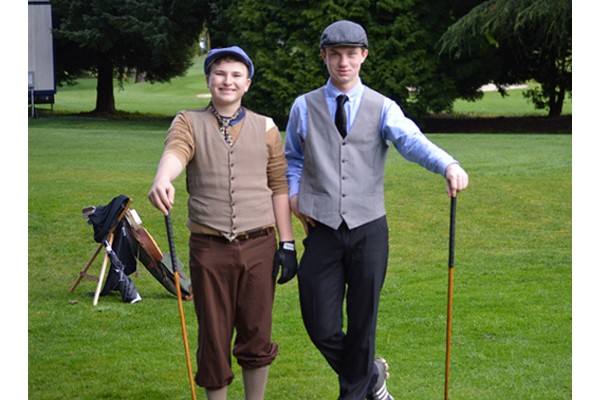Tickets on sale for LPGA major event at Sahalee
Photo by Scott Bisch

By Brian Giboney, Special To Inside Golf
Welcome back to The Hickory Corner where we explore hickory golf (golf with pre-1935 equipment). This month we will talk about the ongoing hickory golf debate of antiques vs. replicas.
Hickory purists (or people who perceive themselves as purists) believe a hickory golfer should only play antique hickory clubs from the era. Whereas many players, both high handicappers and former Master’s Champions like Sandy Lyle are playing “replicas” which are clubs made from the original designs of the era. Replica hickory clubs are approved for hickory tournament play by the governing body of hickory golf The Society of Hickory Golfers (SoHG).
However, the hickory purists will eventually go away and here is why: #1. There are not enough antique hickory clubs to support any sustained growth in the sport. #2. The remaining population of antique clubs is not going to last long enough to even support the current level of hickory play. Also, only replica hickory clubs can handle a tour pro’s swing speed.
As research for this month’s Hickory Corner I contacted one of the finest hickory players on the planet, if not the finest – Jeremy Moe, Head PGA Professional of Hardscrabble Country Club in Fort Smith, Arkansas. Jeremy has won the 2014 World Hickory Match Play as well as the last three U.S. Hickory Opens in a row – his own version of the Michael Jordan 3-peat. Jeremy has two sets of hickory clubs. One set of antique hickories, which he is very found of, and one set of replicas.
Jeremy plays some of his hickory golf with his antiques, but the majority of his hickory golf is played with his replicas because they are more durable and can handle his practice schedule ahead of a tournament and the tournament itself. As for the debate between the two I asked him point blank if people razz him for playing replicas and he said “Bobby Jones didn’t play golf with 100 year old clubs. Bobby had new and plentiful equipment to try and complete his bag. He would hit dozens of mashies before deciding on one, he didn’t have a launch monitor, just old fashioned trial and error. But he had so many to try that he eventually found the one that really worked for him. If we all had that opportunity there wouldn’t be a need for reproductions.” Point goes to Jeremy Moe.
My research did not end there. Next I reached out to Mike Just of Louisville Golf to chime in on the debate of antiques vs. replicas. Mike didn’t hold back: “First of all, not all original guys are what I will call “original snobs” but the “original snobs” are people who feel superior and look down their noses at guys who play replicas. Yet some of those guys will send me an original driver and ask me to install an insert, change the loft, reshaft with specific flex shaft, install a new grip, make it a D2 swing weight and refinish the head. What’s the difference between this and a new replica made in an appropriate model? (the replica is more authentic) I could go on all day about this but what I want people to know is that the first replica iron that I ever made was a flanged niblick.
I made this club after playing in an event in Canada more than a decade ago. I was having a terrible time getting out of traps with a thin-soled niblick with dig angle on it. A guy in our group was getting out of traps just fine and I asked him how he was doing that. He showed me an original flanged niblick that had some bounce on the sole. I asked where to get a club like that and he said they are hard to find and they are very expensive. My thought was that everybody who had one of these clubs held an advantage over everyone in the field who didn’t have one. And since they were hard to find not everyone could have one. I wanted to make a club like that available to everyone in order to LEVEL the playing field. That was my motivation to make our first replica. Replicas allow people entry into hickory golf.
But wait there’s more! Let’s bring in the other superstar hickory club maker in Tad Moore. Tad’s take on the debate of antiques vs. replicas is: “I had been playing hickory golf since the late 80s and I had struggled finding good clubs. Around 2002 it was apparent to me that if I was having troubles acquiring a good set of originals then anyone wanting to acquire a good set probably could not. It took me 10 years. Very quickly I found a market for the sand-iron this encouraged me the next year to produce woods.
Early hickory events would find around 25% of the players using reproductions and said they could not have played without them. Reproductions open the door for new players coming to the game. I think it also is apparent that some players of reproductions eventually try to put together a set of originals. The hickory game grows on the availability of good hickory clubs and reproductions is the best way for someone to be able to experience a good result.”
Hard to argue with such good logic, extensive experience, and the reality facing the game of hickory golf.